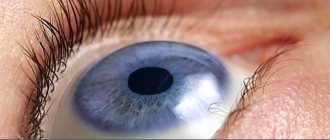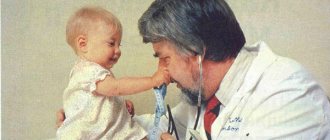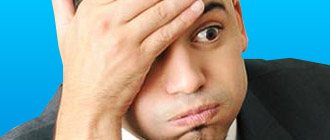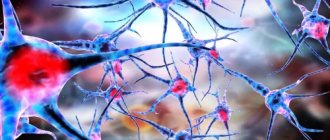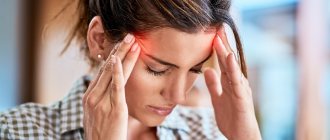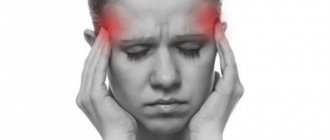Headache is one of the most common types of neurological disorders according to the World Health Organization. WHO statistics state that half of the world's adult population experiences an episode of headache at least once a year.
Despite its widespread prevalence, the pathology is often not treated properly: many patients prefer not to seek medical help, but to take available painkillers to temporarily numb the pain. But such a decision is dangerous because of its consequences: a headache may not be an independent disease, but a symptom of a serious neurological disorder. What types of headaches exist and which specialist should I contact for treatment?
Why does my head hurt?
Any discomfort that occurs in the body indicates the occurrence of pathological processes, and headaches are no exception. There are many reasons why discomfort occurs. Among the most common:
- violation of the tone of blood vessels supplying the brain;
- poisoning;
- infections;
- fever;
- traumatic brain injury (TBI);
- diseases of the spine.
A headache attack can be triggered by a disturbance in sleep patterns, a change in climate zone, or prolonged physical or intellectual overload. Even a single case of headache indicates some kind of disorder in the body, but if attacks occur regularly, it is recommended to make an appointment with a neurologist.
Headaches can be concomitant symptoms of other diseases: meningitis, sinusitis, sinusitis. If discomfort persists for a long time or is constantly repeated, the patient may have cardiovascular pathologies, kidney disease, or parasitic infestations. Sharp pain in the orbital area can be caused by glaucoma and eye abnormalities.
Only a specialist can determine the exact cause of headaches after examination and additional tests.
What types of headaches are there?
In neurology, the “International Classification of Headache Disorders” approved by WHO is used. According to the current classifier, there are 13 main groups of headaches, some of which are characterized as primary (that is, being an independent pathology), and some as secondary (occurring against the background of other diseases).
The cause of the primary headache can be:
- vascular in nature - caused by cerebral vascular dystonia and can be different: pulsating, aching, causing a feeling of squeezing and heaviness. Symptoms depend on the characteristics of the pathology: for example, if the venous outflow is impaired, the patient complains of a feeling of fullness, which intensifies when lying down;
- vertebrogenic – caused by spinal pathology, for example, cervical osteochondrosis. In this case, the curvature of the spinal column disrupts the normal nutrition of the brain, which becomes the cause of acute or aching pain;
- Tension headache is the most common type, which is described by patients as a feeling of pressure, a “hoop” or “helmet”. It can occur occasionally or regularly - in this case, neurologists talk about chronic pathology. Develops against the background of autonomic dysfunctions and constant stress;
- migraine - paroxysmal severe pain that appears on one side of the head. Often accompanied by sensitivity to light and smells, nausea, and vomiting. Usually occurs in young people under 35 years of age;
- trigeminal autonomic cephalgia, which includes, for example, cluster pain. It is characterized by sharp painful attacks that occur on one side of the head, alternating with periods of remission. As a rule, the attack is quite short and lasts a few seconds;
- cough - occurs against the background of coughing, sneezing or other physical stress associated with straining. It has a sharp cutting nature, lasts from several minutes to half an hour;
- developing after physical activity - appears exclusively after various exercises, training, running or heavy physical work
A separate classification exists for secondary headaches. According to it, pathology can develop against the background of infections (for example, meningitis), after traumatic brain injuries and neck injuries, with ENT diseases, mental disorders, and depression. A separate category includes headaches that appear from uncontrolled use of painkillers.
For effective treatment, it is necessary to establish the type and cause of the headache. This can be done during an examination by a qualified neurologist.
Migraine symptoms
An attack may begin with a phase of “harbingers” - symptoms immediately preceding an attack of pain.
Below is a general list. These symptoms may appear in different combinations in different people.
Precursors usually appear several hours (in some cases days) before the onset of pain. However, quite often a migraine attack develops without going through the “precursor” phase.
Headache
Pain can occur at any time of the day, but most often it begins at night, during sleep, in the morning or immediately after waking up. Migraine is characterized by unilateral pain, focusing in the frontotemporal region with involvement of the eyeball. In 20% of cases, pain occurs immediately as bilateral; more often, having arisen as one-sided, the pain subsequently spreads to the other side. The nature of the pain is usually pulsating, sometimes bursting.
More about the symptom
Reduced threshold of excitability of sensory organs
Pain may be accompanied by an increased reaction to sensory stimuli - light, sounds, smells, touching the body - everything can increase pain. During an attack, the patient tries to retire, go to bed, darken the room, that is, reduce all external influences to a minimum.
Aura
In approximately 20-25% of cases, the disease has a specific “aura” phase. Migraine with aura is considered a classic form of the disease - this is how it was originally described. Ordinary migraine (without aura) was included in the description of the disease later.
Migraine aura is a complex of neurological symptoms that precedes and sometimes accompanies an attack of pain, and represents disturbances of various types of sensory perception that pass without consequences during the attack.
If an attack develops with an “aura” phase, this phase usually includes the warning symptoms observed in ordinary migraine. Specific manifestations of the aura can be as follows:
- the patient sees flashes of light, flickering dots, balls, broken lines before his eyes. Migraine with a similar aura is called ophthalmic
. This is the most common form of migraine with aura; - temporary blindness occurs in one or both eyes ( retinal migraine
); - oculomotor functions are impaired, double vision occurs, the pupil on the side of pain dilates ( ophthalmoplegic migraine
); - temporary weakness develops on one side of the body or only in the arm, phenomena of paresthesia may be observed - a feeling of goosebumps crawling across the body, tingling, chilliness ( hemiplegic migraine
); - speech disorders ( aphasic migraine
).
Other, more rare disorders are also possible. The “aura” phase, depending on the type of manifestation, lasts from several minutes to 1 hour.
Other symptoms
Against the background of an attack (pain attack), the following may be observed:
- nausea;
- vomit;
- photophobia;
- lethargy;
- cold hands and feet.
How is a migraine different from a headache?
Migraine is often called any headache, but this is a misconception. In fact, migraine is one of the types of headaches that has a number of distinctive features:
- pain is localized in one half of the head;
- has a sharp, often pulsating character;
- pain syndrome is accompanied by increased sensitivity to smells and light, as well as nausea, often vomiting;
- an attack rarely lasts longer than a day.
Often before a migraine, patients experience characteristic signs of developing pain: for example, short-term blurred vision, tingling in the fingertips. The disease is more often diagnosed in young people aged 18 to 35 years, women are more susceptible to migraines than men.
Despite the prevalence of migraine, neurologists have not fully established the cause of its occurrence. The main factors associated with the development of migraines:
- heredity;
- vascular pathologies of the brain;
- congenital abnormalities of brain tissue.
An attack can be triggered by stress, an unbalanced diet, lack of proper rest, or sudden intense physical activity. Migraine is one of the most severe headaches, temporarily depriving a person of his ability to work. To stop it, it is necessary to choose the right medications, as well as adhere to preventive measures developed by the observing neurologist.
What triggers migraine
Some people note that the frequency of migraine attacks is affected by their activity, consumption of certain foods or drinks.
It is impossible to say exactly what will trigger the appearance of the disease in a particular person. But there are a number of triggers that have been proven to affect the frequency of attacks:
- Hormonal changes
Changes in estrogen levels before, during, or after menstruation may influence the occurrence of migraines. In addition, some women note a worsening of the disease while taking hormonal medications.
2. Alcohol
Usually one type of alcohol acts as a trigger. Most often, headaches occur after drinking champagne, red wine and beer. This is most likely due to the fact that they contain tyramine and sulfites.
Is there an allergy to alcohol?
Interestingly, drinking strong alcohol in most cases is not accompanied by migraines.
Excessive alcohol consumption harms your health more than migraines, so we do not recommend replacing low-alcohol drinks with strong ones.
3. Stress
It is known that chronic stress and constant emotional tension provoke migraines. But the problem is that migraine attacks themselves cause stress. It's hard to enjoy life when you constantly have a headache.
Therefore, a person often finds himself in a vicious circle: migraine-stress-migraine, where it is difficult to understand what exactly triggered the headache and how to get out of it.
4. Sensory stimuli
Bright sunlight, loud music or a neighbor's drill, intrusive perfumes, the smell of cigarette smoke or freshly painted walls in the entrance can also trigger an attack.
5. Disturbed sleep patterns
How to fix your biological clock so you can sleep well and get enough sleep
If you chronically do not get enough sleep or, on the contrary, sleep too much, then over time you may notice that migraines appear more and more often.
6. Too much activity
Intense exercise can cause migraine headaches.
7. Diet and regimen
People on strict diets are more likely to experience migraine-like headaches. But not only a calorie deficit affects the occurrence of attacks; the foods themselves can also cause pain. For example, some aged cheeses, pickles or semi-finished products behave this way.
In addition to these factors, many people with migraines say that an attack is triggered by changes in weather.
For example, the head begins to hurt before rain or cold weather, but numerous studies have not found confirmation of this
Why is it dangerous and does it need to be treated?
Even if you are faced with a single attack of mild headache, this indicates the presence of hidden disorders that can develop in the future and lead to various pathologies: for example, vascular disorders. But there are markers indicating that you should contact a neurologist immediately:
- the pain is sudden, intense, and difficult to bear;
- pain appeared after physical labor or sports training;
- you recently had a head injury (severe bruise, blow from a fall);
- headache increases with changes in body position;
- painful sensations are accompanied by other symptoms: blurred vision, numbness of the limbs, goosebumps, nausea, unfocused attention, fever.
An attack can be caused by a stroke, acute poisoning, oxygen starvation of brain cells, or infections. Therefore, it is necessary to make an appointment with a neurologist as soon as possible. The specialist will conduct an initial examination and prescribe additional examinations:
- Doppler ultrasound – ultrasound examination of the vessels of the neck and head. Allows the doctor to determine the volume of blood flow, detect fluid stagnation, assess the elasticity of the vascular walls, and so on. Vascular problems are one of the most common causes of frequent pain and dizziness;
- SCT (spiral computed tomography) is a non-invasive examination that allows you to assess the condition of the brain tissue and meninges, detect deviations from the norm, structural abnormalities, foci of inflammation, tumors, bleeding;
- MRI of the brain. Another non-invasive study, painless and safe for the patient. In the images, the neurologist can see pathologies, injuries, paroxysmal conditions, abnormal vasodilation and other abnormalities.
If the infectious nature of the disease is suspected, general tests may be prescribed: for example, urine and blood tests.
You should also consult a neurologist if you periodically suffer from headache attacks. The doctor will determine the causes of pain and select effective therapy to eliminate it.
Which doctor should I consult for treatment of migraines and headaches?
If you have episodic or regular headaches, you should consult a neurologist. In order for the doctor to quickly determine the nature of the pathology and establish its cause, be prepared to answer a number of questions:
- in which area of the head the discomfort is localized: in the forehead, in the temples, on the back of the head;
- what is the nature of the pain: pulsating, dull, sharp, migrating, etc.;
- how long ago it appeared and how often it repeats;
- is it accompanied by additional symptoms: sensitivity to light, smells, nausea;
- whether other family members suffer from headaches;
- Do you have a history of birth, traumatic brain injury, neuralgia, or previous neurological infections?
Patients may be advised to keep a special diary in which to record recurring episodes, their triggering factors, duration, and course characteristics. The neurologist may also ask about the daily routine, the nature of work, and lifestyle. After examination and receiving test results, the doctor will accurately determine the type and cause of pain and select the appropriate medicine.
The treatment is complex and is aimed both at relieving attacks of pain (with the help of various analgesics) and at eliminating the root cause of its occurrence. Much attention is paid to lifestyle correction.
How to relieve migraine pain
There are proven medications that can be used to combat migraines, depending on the severity and individual tolerance. For migraine headaches the following is prescribed:
- Non-steroidal anti-inflammatory drugs;
- non-narcotic and narcotic and analgesics;
- combination agents;
- ergotamine-containing drugs;
- triptans.
Migraine headache treatment
Is it possible to get rid of headaches using traditional medicine?
Many patients faced with recurrent headaches are in no hurry to consult a neurologist and try to recover with the help of traditional medicine. However, this approach does not lead to a positive result: any self-medication is dangerous. This is due to a number of reasons:
- uncontrolled use of painkillers (even of herbal origin) can lead to serious side effects: disruption of the liver and kidneys, allergic reactions, problems with the gastrointestinal tract. This will not only not relieve neurological disorders, but will also lead to the development of new pathologies;
- The cause of the headache can only be determined after a series of medical examinations. Without this, any therapy comes down to masking the symptoms, while the pathology causing the headache continues to develop.
Therefore, you should not postpone your visit to the doctor and rely on traditional medicine. But patients can actually take some actions that will reduce the frequency of relapses and relieve headache attacks. We are talking about developing healthy lifestyle habits:
- regular physical activity. One of the common causes of headaches is physical inactivity, as a result of which the tone of muscles and blood vessels decreases, the blood supply to the brain tissue deteriorates, and degenerative processes begin. Sports and exercise help strengthen the body and reduce the risk of chronic headaches;
- balanced and varied diet. It is recommended to exclude fast food, fatty, smoked and salty foods from the diet, eat more vegetables and fruits, replace white bread with rye bread or baked goods with bran. A properly selected diet is a good prevention of vitamin deficiencies; it also prevents excess fluid from accumulating in the body, which can increase intracranial pressure and lead to migraines;
- full 8-hour sleep. During sleep, the body recovers and “gets rid” of psycho-emotional stress. Regular lack of sleep undermines a person’s immunity, increases stress levels, and leads to cerebral vascular spasms;
- correct drinking regime. Necessary for maintaining a healthy water-salt balance in the body. Doctors usually recommend drinking up to 2 liters of clean drinking water per day (not counting liquid obtained with other products). During hard physical work, intense physical activity, and in hot weather, the amount of water consumed should be increased;
- regular walks in the fresh air (from 1 hour a day). While walking in parks and forested areas, the body receives the missing physical activity, the blood is saturated with oxygen. This is also important for preventing headaches.
Is it possible to get rid of headaches and migraines? It is expensive?
If you consult a neurologist in a timely manner, you can completely get rid of headaches. The doctor will select drug therapy and develop preventive recommendations to prevent relapse.
To fully recover, you will need:
- follow medical instructions;
- normalize work and rest schedules;
- get rid of the causes of headaches (concomitant diseases);
- lead an active and healthy lifestyle.
Your health is in your hands! There is no need to think that recovery is expensive. Much of your success depends on how willing you are to change your life for the better and follow your doctor's orders.
1
0
0
Article rating:
5 out of 5 based on 1 rating
Author: Atamanenko Alena Valerievna
General practitioner, endocrinologist, physiotherapist. Second category. Work experience more than 9 years.
How to treat migraine?
No way. It is impossible to completely cure any disease caused by genetic defects. But there is good news! Nowadays medicine, unlike ancient Greek, no longer offers drilling holes in the skull to expel the evil spirits of migraines, but now there are medications that can:
- alleviate the condition during an attack;
- slightly reduce the intensity and frequency of attacks.
Since it is impossible to completely get rid of migraines, you need to strive to bring them into “perfect balance.” That means:
- no more than 2 attacks per month;
- The duration of each attack is no longer than 2 hours.
What can be done for this?
1. Identify your triggers (factors that provoke an attack) and, if possible, avoid them.
2. Talk to your doctor about medications that can help make attacks less painful, and start taking them. What kind of drugs are these?

